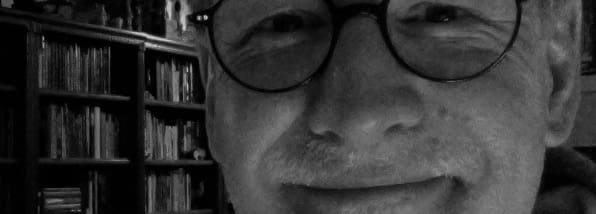Life, As I Find It
Anglican minister J.B. Phillips decided in the late 1940s to create a translation of the New Testament that was readable and comprehensible to the people of Britain. Over several years, and with an endorsement from C.S. Lewis, he succeeded. Many would agree even now that the Phillips translation is a remarkable work. In particular I found his translations of St. Paul’s letters to be exceptionally helpful, readable and vibrant.
Years later, Phillips chronicled his adventures in translation in a book called The Ring of Truth. He explained how, when he approached the Scriptures, he was struck singularly by their “ring of truth,” a resonance that moves deep within the human heart and soul. It’s mysterious. Yet most of us understand what he means. We see it in art, movies, literature and music. Something “rings true” in the humanity of the work.
By what authority does someone interpret Scripture and establish doctrine? That was the pivotal question for my journey into Catholicism. In another post, I explored the assumptions behind Authority and why it’s given to various pastors or teachers or lay-people. I believe “the ring of truth” is one reason we accept the Authority of one person over another. And that makes me think of C.S. Lewis.
When reading Lewis – whether it’s in The Screwtape Letters, Mere Christianity or The Problem of Pain – it’s astonishing to me how rarely he quotes or directly references the Bible. Yet he’s revered by Evangelical Protestants who demand that their writers reference and cross-reference Scripture. Catholics love Lewis, too, even though he was a staunch non-Catholic (not anti-Catholic, but certainly in disagreement over various doctrines). Christians of all stripes have high regard for the man, though he doesn’t always fit the bill for their core beliefs. One has to wonder how he gets away with it.
I’m persuaded that it’s the deep and profound “ring of truth” in his writings that allow people to look the other way from his more contentious points. For example, I think few are as masterful as Lewis at catching a sense of the eternal world to come.
Here’s an example from the last Screwtape Letter as Screwtape describes the death of the “patient.” He chastises, with lamentation, that his underling devil has let a soul slip through his fingers. “How well I know what happened at the instant when they snatched him from you!,” writes Screwtape. “There was a sudden clearing of his eyes (was there not?) as he saw you for the first time, and recognized the part you had had in him and knew that you had it no longer. Just think (and let it be the beginning of your agony) what he felt at that moment; as if a scab had fallen from an old sore… as if he shuffled off for good and all a defiled, wet, clinging garment.”
Screwtape mourns the relative ease with which the patient died. “Did you mark how naturally – as if he’d been born for it – the earth-born vermin entered the new life? How all his doubts became, in the twinkling of an eye, ridiculous?… The extraction hurt more and more and then the tooth was out. The dream became a nightmare and then you woke. You die and die and then you are beyond death.” Then the patient sees the Beings of Heaven and “he knew that he had always known them and realized what part each one of them had played at many an hour in his life when he had supposed himself alone, so that now he could say to them, one by one, not ‘Who are you?’ but ‘So it was you all the time.’”
Finally, the patient sees Him. “This animal, this thing begotten in a bed, could look on Him,” Screwtape whines. “What is blinding, suffocating fire to you, is now cool light to him, is clarity itself, and wears the form of a Man.” Everything the patient might have considered important is now “in comparison but as the half nauseous attractions of a raddled harlot would seem to a man who hears that his true beloved whom he has loved all his life and whom he had believed to be dead is alive and even now at his door.”
Lewis uses emotion and imagery to capture the unseeable in a beautiful way (using the words of a demon!). Space constrains me from quoting the final chapter to the last Chronicle of Narnia – The Last Battle — in which Lewis describes the journey into eternity. It’s a breathtaking and memorable piece of prose, often used and quoted in books and from pulpits all over the world.
With minimal references to the Bible or any sort of Catechism, Lewis captures the “Ring of Truth” in a way his readers understand and appreciate at the deepest levels. This gives him credibility and, for many, an enormous amount of Authority. Right or wrong, people want to trust a man who can make them see, feel and imagine the eternal in just a vivid way. Lewis was an academic, but he knew he had to go beyond mere academics to accomplish what he set out to do.
The challenge for us as Catholics is to do the same, not to build up our individual authority, but to make the Truth of Christ’s Church alive and meaningful in the hearts, minds and souls of our families, friends and culture.





